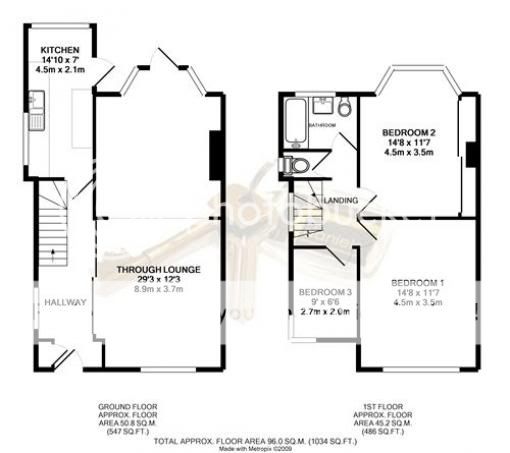Hello all,
I have a 1936 built house. Builder says ALL external walls are SOLID 9" walls, no insulation. The house is incredible cold. There are damp patches on the first floor, but external render seems in good condition.
ADDITION: piccy of floor plan. North - South orientation. Kitchen is to south facing garden.

Can you please advice on INSULATION?
I am planning to strip the wallpaper and get it plastered. I have heard of ways to insulate single skin walls but am a complete dumbass when it comes to building methods (I can paint and tie my own shoelaces, to my credit, but that's it!). Before you advice Search functions, I have read and do not completely understand what to buy or specify for my builder.
I have to make a decision by the end of next week. I need advice on what to use, if plaster needs to be knocked off to bare brick before installation and if the damp wall will cause further problems with the overlay of insulation boards or wool or whatnot.
Can I take this opp to thank the board for the wealth of knowledge it has provided me with the many years I have been lurking here.
Thank You
I have a 1936 built house. Builder says ALL external walls are SOLID 9" walls, no insulation. The house is incredible cold. There are damp patches on the first floor, but external render seems in good condition.
ADDITION: piccy of floor plan. North - South orientation. Kitchen is to south facing garden.

Can you please advice on INSULATION?
I am planning to strip the wallpaper and get it plastered. I have heard of ways to insulate single skin walls but am a complete dumbass when it comes to building methods (I can paint and tie my own shoelaces, to my credit, but that's it!). Before you advice Search functions, I have read and do not completely understand what to buy or specify for my builder.
I have to make a decision by the end of next week. I need advice on what to use, if plaster needs to be knocked off to bare brick before installation and if the damp wall will cause further problems with the overlay of insulation boards or wool or whatnot.
Can I take this opp to thank the board for the wealth of knowledge it has provided me with the many years I have been lurking here.
Thank You

